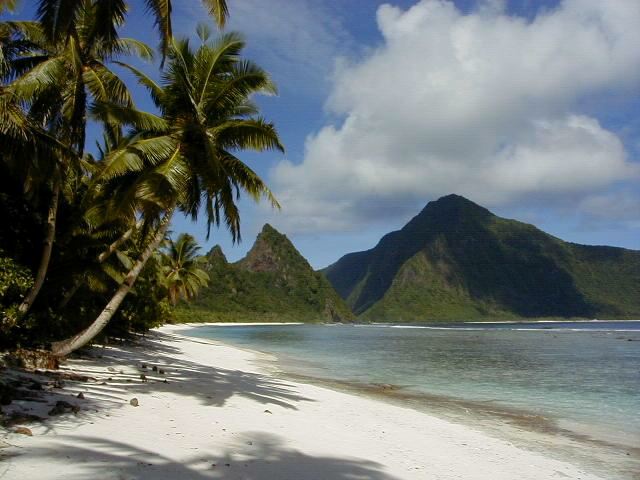American Samoa National Park – the most exotic American territory

The National Park of American Samoa is a park in the United States territory of American Samoa in South Pacific Ocean.
The park is located on the three small islands of Tutuila, Ofu, and Ta’u. American Samoa invites you to enjoy the spectacular coral reefs, tropical rainforests, a variety of flora and fauna including fruit bats and many bird species.
It is spread over 9000 acres of land and 4500 acres of coral reefs and ocean. The park protects 3000 year old Samoan culture, customs, and beliefs. The word Samoa means sacred earth.
The National Park of American Samoa was established in 1988. The National Park System couldn’t buy the territory because the land was communal. This was resolved in 1993 when the NPS got a 50-year lease for the park land from the Samoan village councils.

The park protects five different rainforest types, lowland, montane, coastal, ridge, and cloud. There are hundreds of plant and animal species that you can find here, and lots of them are endangered.

From the highest peak of Tutuila, American Samoas largest island, you can see the Pago Pago harbor. This part of the park is the only bit accessible by car and includes the Amalau Valley, Craggy Point, and the islands of Pola and Manofa.
American Samoa National Park is famous for snorkeling and hiking. The most popular trail takes you to the top of Mount Alava (1610feet) and the World War II gun emplacement at Breakers Point.
Visitors can enjoy an exciting hike through the dense rainforest and experience how the land ends up sloping steeply down into the ocean.
Ta’u Island offers incredible panoramic views of the cloud forest and the southern coast. It’s also a home of American Samoa’s highest peak Lata Mountain.
The main attraction of the small Ofu Island is the sandy beach that most of the visitors consider as the best beach in the park.

The only native mammals in the park are three species of bats, two species of fruit bats ( Samoa flying fox and white-napped flying fox) and Pacific sheath-tale bat. From the reptile species, the most common are the Polynesian gecko, the mourning gecko, Pacific Boa and stumped-toed gecko. Among the rare bird species, most popular are Tahiti petrel, Samoan Starling, many-coloured fruit dove, and the spotless crake.

Some of the largest coral colonies in the world live in the surrounding waters of Ta’u Island. There also sea turtles, humpback whales, and 950 fish species.

The best time to visit American Samoa National Park is all year round. Being only 14 degrees south of the Equator gives the park warm climate during the whole year. Getting there takes more or less 14 hours from California with a layover in Honolulu. From Honolulu to Pago.

American Samoa National Park is a real paradise and probably the most exotic area under the American flag.
If you have a chance to visit these astonishing islands, do it for your next vacation and let life surprise you with a natural beauty you won’t find in any other park in the States.
If you have any comments then please drop us a message on our Outdoor Revival Facebook page
If you have a good story to tell or blog let us know about it on our FB page, we’re also happy for article or review submissions, we’d love to hear from you.
We live in a beautiful world, get out there and enjoy it.
Outdoor Revival – Reconnecting us all with the Outdoors.
